
The Scope and Power of Prudence
Prudence, a tandem to Cat 3 problem solving, encompasses every dynamic involved in getting to and sustaining a flourishing way of life. Next to problem solving , prudence is a cardinal measure by which goal-seeking progress is assessed. Prudence is the requisite benchmark for allocating your efforts to beneficial purpose, to flourish. There is no easy way to make the right choices. Duped by socialization, brain hijacked, it took five decades for us to give up our fallacious assumptions.
Prudence in problem-solving is essential for living a psychologically-successful life. Prudence is a fundamental prerequisite of high-stakes trust, of prosperity. As prudence is the gateway to the expression of all other human virtues, you have to wonder why the Establishment has made prudence itself undiscussable, to be downplayed in social conditioning. Evidence of this crime against humanity is classified as undiscussable.
The history of Prudence goes back without interruption for four thousand years, both in the West and the East. The word was invented to represent the experience-informed necessity to deal with real problems in life by engaging them with real knowledge, formal logic, and practical skill. To think that sentence made sense to someone before the Bronze Age!
Survival of society depended on solving big issues with the operational reality with big knowledge about the particular reality. Miserable experience with medicine men and voodoo, when facing grave and novel issues, convinced many ancient philosophers that mumbo jumbo was not an effective way to avoid species extinction, because the cause of the calamity remained unmitigated.
Your relationship to reality is primary. You cannot avoid being in reality. The only question is how you choose to align with it. There is nothing to be gained for you to be at odds with ecosystem reality. All attempts to defy nature are punished. Neglecting the truth, going with psychological shenanigans, doesn’t faze reality itself. When you dissemble, it can only be to deceive another human and yourself.
It pays to factor-in the indifference of nature to the human species. As Nature is indifferent to anything material, gas or dust, nature is the prime mover in our trajectory from dust to dust. As reality is indifferent to falsehood, it plays no role in mutual deception. People that are into opinions and intentions interact in a subconscious world apart from reality. Fantasy has no bounds, which is why human debate has no end. You don’t flourish by opinions but by performance with reality
From the first, the expressed, all-encompassing philosophy of prudence as fundamental to intelligent, happy living was spot on. It still applies. When the need for prudence became critical to stabilize advanced societies, the reaction of the Establishment was to shift the meaning of prudence away from the connection to the operational reality, sagacity, to fuzzy-wuzzy ethics, dethroning pragmatism as top cardinal virtue. As the ancients deduced, without prudence there is no ethics, no probity.
Evaluate the behavior of modern society against the venerable benchmarks of prudence and the level of imprudence now raging in global society announces itself.
The former proposition—that each is the only safe guardian of his own rights and interests—is one of those elementary maxims of prudence, which every person, capable of conducting his own affairs, implicitly acts upon, wherever he himself is interested. Many, indeed, have a great dislike to it as a political doctrine, and are fond of holding it up to obloquy, as a doctrine of universal selfishness. To which we may answer, that whenever it ceases to be true that mankind, as a rule, prefer themselves to others, and those nearest to them to those more remote, from that moment Communism is not only practicable, but the only defensible form of society; and will, when that time arrives, be assuredly carried into effect. John Stuart Mill (1870)
The fact that the Establishment trashed the venerable prudence standard of social behavior, because it could never meet it, does nothing to change the role of prudence in Darwinian survival of our species. Making believe the prudence concept never existed does not invalidate its great relevance to secure, prosperous social living. Over the millennia, many descriptions of prudence have been published, all dealing with prudence in the abstract – debatable and therefore not relevant to practical day-to-day living.
Prudence is the charioteer for the other three virtues: justice, fortitude and temperance, which are only feasible when conferred by prudence. Thomas Aquinas 1260AD
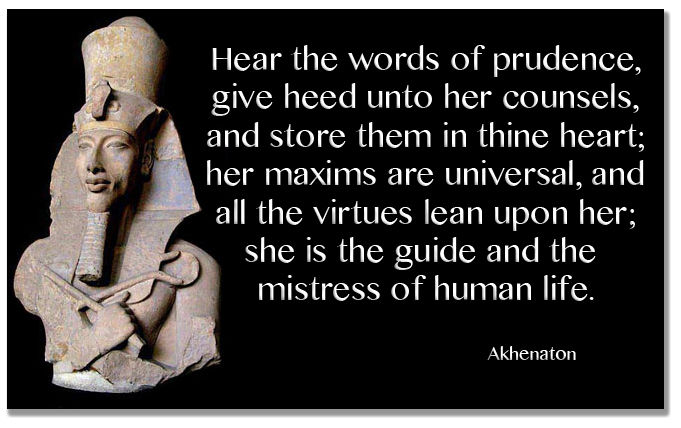
From the Greeks
- One has no effective prevention power save prudence
- Prudence means grasping the truth, it is
- Intelligence applied to practical matters
- Appropriate selection is the basis of prudence
- Sagacity in adapting means to ends, in goal-seeking
- Skill and good judgment in the use of resources
- Prudence takes heed of evidence and makes tradeoffs
- Prudence foresees potential disturbances to the pathway and takes precautions
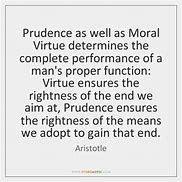
The requisite means for living the good life is prudence, a methodology of morally good actions – probity, respectful of inalienable rights, and sagacity in practical affairs.
Without prudence, bravery becomes foolhardiness; mercy sinks into weakness, free self-expression and kindness into censure, humility into degradation and arrogance, selflessness into corruption, and temperance into fanaticism.
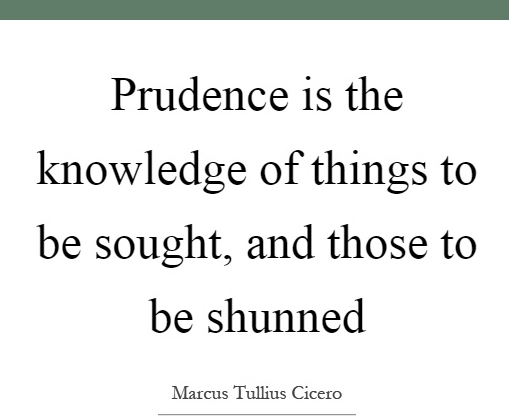
Prudence is:
- The prudent pragmatist method: the weighing and balancing of alternative courses of action having adequate knowledge of cause/effect.
- A mode of reasoning about contingent matters in order to select the best course of action effective in the operational reality. It does not apply to abstraction, fantasy, intuition, grok, and other delusions (GIGO).
- Avoiding any attempts to defy natural law
- The only effective means to solve complex real-life problems
- A package deal. All elements must be satisfied.
- Imprudence is an element by element deal. Any defective element will destroy prudence.
- A system for doing the necessaries to define the goal and the sure process to attain it, at negligible risk of failure
- The measure of moral virtues, since it provides a model of ethically good actions. The activity of man is good by its correspondence with the system of prudence.
- Prudence confers upon other virtues the form of its inner essence; that is, its specific character as a virtue.
- Prudent describes someone or something as showing special care or thought towards matters of the future.
- Prudence is the ability to govern and discipline oneself by the use of reason.
The virtues, which are defined to be the “perfected ability” of man, having intelligence and free will, achieve their “perfection” only when they are founded upon prudence, that is to say upon the perfected ability to make right decisions.
The function of prudence is to point out which course of action is best to be taken in any concrete circumstances. It has nothing to do with directly willing the good it discerns in attaining the goal. Prudence has a directive capacity with regard to the other virtues. It lights the way and measures the arena for their exercise. It does not condone attempts to defy the iron laws of human ecosystems.
From the Bible
There are 33 direct references to prudence and 315 examples of it in action.

Elements of prudence
Prudence is the ability to govern and discipline oneself by the use of reason. It is classically considered to be a virtue, and in particular one of the four Cardinal virtues. The other virtues depend on prudence for their expression. There is no morality without prudence.
With each decision, there are three components of prudence to consider when determining if the decision that you are making is a prudent one: 1) the act itself, 2) the intention, and 3) the circumstances. Prudence is a mode of reasoning about contingent matters in order to select the best course of action
By three methods we may learn prudence:
- By reflection, which is noblest
- By imitation, which is easiest
- By experience, which is the bitterest
Insight to foresight
Foresight is the principal part of prudence, for the name itself (prudence) is derived from the Latin providential, which means foresight. Foresight is a means to rightly ordering human acts to the right end.
When the occasion calls for foresight, and it often does, we create an avatar of ourselves and send it out as a vedette to explore our mental model of futureworld. We take our vedette’s report as an input for choosing action in the now. The trustworthiness of the news from our avatar depends a great deal on the fidelity of our mental models of reality, the amount of knowledge possessed by our avatar, and its skill in adapting to what it finds out there in our simulated future world. That is, the avatar has to be prudent to be valuable. The imprudent among us skip all the cognitive effort of dependable foresight and default to intuition and rationalizing its grokked choices as direct orders from divinity. Imprudency applauds attempts to defy natural laws.

Since all flourishing social systems come to their state by ecological functioning, not by keystone power alone, it becomes highly significant that “leadership” cannot be prudent. It can’t.
The functionality of prudence
- Prudence is the ability to govern and discipline oneself by the use of reason.
- Prudence is avoiding any attempts to defy a natural law.
- Discovering and grasping the truth
- Take heed of evidence
- Prudence extends to singulars as well as universals
- Intelligence applied to practice
- Sagacity and probity in adapting means to ends
- Skill and good judgment in the use of resources
- Foresees disturbances to the pathway and takes precautions
- Takes responsibility for outcomes
- Prudence is project (novel and temporary), you are prudent project by project, no carryovers. Comes as a set with project completion as closure.
- Prudence is measured by POSIWID, by intermediate discernable milestones, not opinions.
- Prudence is goal-seeking productivity in the operational reality, effecting good practical reasoning in guiding action.
- Prudence compels a person to practice justice, self-care and fidelity.
Prudence, like trust, is evaluated and validated by performance and results of running a project within reasonable time, cost, and rework constraints in the ever-changing operational reality, and its maintenance shoring against the 2nd Law.
Prudence was a common topic of discussion in ancient Greek philosophy. It is allied with Phronesis, or practical wisdom, an ancient Greek word for a type of wisdom or intelligence relevant to practical action, implying both good judgement and excellence of character and habits, wise in practical affairs, sometimes referred to as “practical” virtue. Of what value might impractical virtue be?
The perfected ability to make right allocations of effort in any concrete circumstances and matters of the future.
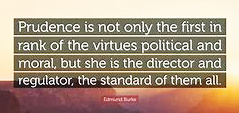
Without the virtue of prudence, the other human virtues are dead in the water.
The application of universal principles to particular situations – morally discerning choices:
- The cognition of natural law and practical first principles, known as synderesis.
- A capacity to predict the future rooted in experience
- Knowing when the context includes persistent attempts to defy natural laws.
- Prudence is a generic skill for bringing-in successful projects. It is a pragmatic discipline, a standard of care.
- Only the keystone can meet the standards of prudence and bring it into the hierarchy.
- Prudence is validated, after the fact, by project goal attainment and how it was attained, milestone by milestone
- Prudence encompasses: Creativity, Curiosity, Judgment, Love of Learning, Perspective

Our Specification of Prudence
The common denominator of the various definitions of Prudence published over the millennia is general and abstract. Since there is nothing in this rendition of abstraction for an auditor to count, it helps explain why the concept of prudence has been so durable. In the operational reality, however, the abstractions are just ornamental, virtue signaling.
To the pragmatist, abstraction is not a navigational aid. The supreme human virtue, abstract prudence, like ethics, is not a map for daily living. How one logically and faithfully translate the abstractions of prudence as philosophy into task actions he can actually perform? That magic, called the Franceschi Fitting (FF), is performed by expressing the generalizations of reality in physical functions, an act taking considerable knowledge, experience, and genius that only an individual mind can perform. To the individual determined to be prudent, the chore gets down to: In this situation, what particular action do I take now? It is noteworthy that this magic cannot be validated prudent any other way than by implementation in the operational reality.
The level of translation one step below prudence towards tangibles is allocation of your efforts, cognitive and physical. Going from the abstract to choosing action is not formulaic. It is creativity and invention, acts that only an individual mind can perform. The big question becomes how, exactly, do humans make specific allocations of their efforts from generalizations, such as prudence?
How does a human choose what it selects to do? There will be no prudence until that question is resolved. The answer is a hitchhiker’s guide to the galaxy
The subconscious mind is always first on the choice-making scene and it initializes with health and GYAT. You can’t control your subconscious on choice-making and you can’t turn it off.
- You don’t know its input data
- You don’t know its processing
- It is irresponsible
- There is only the output imperative display on your teleprompter
While knowing how the subconscious decides is unknowable, what you can know, because of its speed, is what can’t be taking place in trustworthy form. Any logic checking taking time is excluded.
Expressing physical functions in tangibles is comparatively straightforward. Any work you do in going from functions to part numbers and flow diagrams can be reverse engineered and independently audited for prudence. There is nothing simple or straightforward about translating from generalization to particular tasks. Forget grok.
The translation from prudence in the abstract to prudence in physical functions that has proven itself to meet the conditions of prudence by implementations. The algorithm is generic. The algorithm of prudence, choice-making, works in any social situation, any context, 100% of the time. It guides how choices are made along the pathway from imprudent Plan A to prudent Plan B.
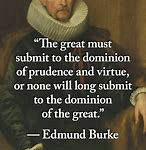
The algorithm of prudence™
The algorithm of prudence is the process by which you pursue courses of thinking and action. The process of prudent choice is effortful and time-consuming. There are no short cuts to knowledge development. The law of optimality instructs that to end prudent you must start prudent. The application-tested winner is called The Front End.
The Front End (reliable prediction, risk elimination)
-
- System scope, what’s in, what’s out, and the interfaces
- Actionable quality information, grasping truth
- Franceschi Fitting
- No attempts to defy natural law
- Risk assessment and elimination, “Penetrations” FMEA exercise on all functionalities
- Bias compensation, morality
- Scrutably connected to natural law and practical first principles
- Foresee disturbances and take precautions
- Early, trustworthy assurance of project success
- Goal specification, the compelling purpose
- Milestones
- Square deal
- System scope, what’s in, what’s out, and the interfaces
- Authentic responsibility for satisfactory outcomes (keystone)
- Angst release
- Hormones: Low testosterone, high oxytocin
- Transparency, no undiscussables
- High stakes trust
Project Operations
- High performance, productivity
- Square deal inalienable rights
- Rogerian Triad
- Constantly adapting means to ends
- Timely feedback
- Midcourse corrections
- Square deal inalienable rights
- Actualized, streaming benefit package
- Positive reciprocity
Plan B Husbandry
- Preventative maintenance
- Competitive advantage
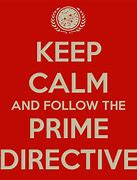
Observations and commentary
- Both the goal specification and the process by which the goal can be obtained involves appropriate selection (intelligence), manifest prudence. If the wrong goal is specified, a common occurrence, the process chosen to reach the wrong goal doesn’t matter. All methods, prudent or not, will fail to resolve the cause of the problem.
- All head sheds of tall hierarchies attempt to defy the ecosystem laws of their own ecosystem. Nature punishes all offenders with equal-opportunity consequences. Punishment flows with the flow of defiance.
- The Establishment can predict your action because it has direct access to your choice-making apparatus you don’t even know about.
- If the right goal is prudently specified, its attainment depends upon choosing an appropriate, effective goal-seeking process. If the process is traditional, authoritarian rule-based, for example, it cannot also be intelligent. The intuition of the head shed fails.
- As intelligence is a core component of prudence, and you cannot be prudent by faith, the stupid and the ignorant cannot be prudent. Intelligence (Ashby) being a function of knowledge developed means that children should not be expected to be prudent. The only thing children learn from “corrective” punishment is more imprudence.
- At the same time your subconscious mind is brilliantly managing your internal viability systems, making correct choices, it is making bias-laden choices about managing the external disturbances to your homeostasis that are woefully counterproductive.
- Compulsion to conformance to the imprudent wishes and operating rules of superiors in rank is fundamentally extortionate and counterproductive. There is no beneficiary of this extortion, not even in the short run. All participants are victims, all done in the name of social status. Domination by fear and oppression is patently imprudent in the same manner regarding horses, dogs, etc.
- Since falsehood is often found along with what is true, and evil mixed with good, prudence needs a caution that is sober about this and seeks to avoid evil and grasp that which is good. Prudence needs a caution that looks to avoid evil—not just the evil of doing something, but also the evil of doing nothing.
- Imprudence is defended by OTA, blind conformance. No responsibility-taking. If reasoning is out, purposeful imprudence is in. Inappropriate selection is imprudence
- Imprudence brings consequences, usually at a high price. The benefits of prudence come at low cost.
- When people live without knowing their guiding process or their high-level purpose, imprudence, there is no chance for psychological success. Use the definition of prudence as benchmark to identify imprudence. As measured by comparison to the benchmarks of prudence, management norms are imprudent. After comparison to the standard, disbelief is not an option.
- Is it possible to reason with the imprudent?
- Prudence is the incontrovertible, generic methodology of attaining goals.
- Imprudence is immoral by definition. It is self-destructive to act against species survival.
- The remedy to social dysfunction is not to legitimize imprudence.
- Rarely understand what is really driving things dysfunctional at work. Too superficial.
- Being prudent is freely taking responsibility for outcomes in fair exchange for autonomy in choosing.
- Prudence is the prime directive for a flourishing life, prudent choice-making, applied intelligence. The ultimate end is a flourishing society
- No other virtue can contradict prudence
- You cannot be made imprudent without your consent
- Since all flourishing social systems come to their state by ecological functioning, not by keystone prudence alone, it becomes highly significant that conventional “leadership” cannot be prudent.
- Prudence is project (novel and temporary), you are prudent project by project, no prudence carryovers. It comes as a set with project completion as closure.
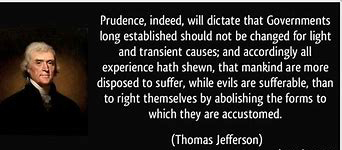
End notes
Life is foremost system dynamics according to universal laws, always ON. The issue for man, an ecosystem himself, is choosing what to do about the dynamics of nature and chance. He can choose to do nothing, but in doing so he is choosing to escape responsibility for outcomes. No one escapes the consequences of their imprudence, especially attempts to defy nature’s laws that cannot be defied.
The mathematical physics of social networks is highly biased to rely on the imprudent unconscious mind. In the network of the hierarchy it only takes 18% of the roster to make imprudent allocation choices with their bias-loaded subconscious mind on autopilot to ensure collective failure to attain the goal. Conversely, it takes at least 82% of the roster allocating their efforts with their conscious minds engaged to assure the goal is attained and sustained. This is why, exactly, high turnover is fatal to Plan B performance, to prudence.
When prudence confronts Plan A authoritarians, as it must, it is stymied and sabotaged by their grok-driven imperatives. It is an impasse to progress that is highly resistant to resolution. The aristocrats can spot prudence coming at them from great distances. Confined by the 2½ Rule to imprudence as their way of life, they “know” dealing effectively with the operational reality in disturbance is not within their scope of capabilities as authority-vested potentates.
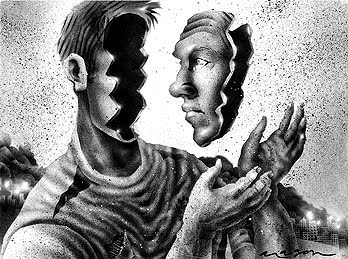
A significant example of imprudence
Standardized Adult teaching methods don’t work and the fact they don’t attain their stated purpose is undiscussable. Included with teaching adults:
- Training
- Auditing
- Regulating
- Instructing
- Inspecting
The atrocious results from standardized adult teaching methods, endemic to Plan A, are examples of deliberate imprudence. The long history of safety training, as one concrete example, has never shown a correlation between the amount of resources invested in training and reducing loss. Trainers and inspectors follow established techniques because it relieves them of any responsibility for positive results in loss reduction. Their imprudence legitimized, insurance companies happily oblige the perpetrators of ineffective adult learning by raising rates to compensate for their incompetence. Premiums have steadily increased for over a century.
When the safety problem is handled with prudence, loss reductions exceed 50% and they are obtained immediately. This is an intrinsic benefit of prudent Plan B that can be demonstrated locally with your organization.
It should be noted that science has thoroughly researched the matter of adult learning and provided explicit best-practices based upon considerable evidence. Since we know they work, we use them religiously. They are part of a prudence audit. In organizational dysfunction, the essential, proven practices of prudence, such as foresight and risk assessment, are avoided.
You must rouse into people’s consciousness their own prudence and strength, if you want to raise their character. Luc de Clapiers
Curiosity
Curiosity is the innate urge to understand, to know. All prudence flows from curiosity, but not all curiosity is prudent. Prudence is the GPS of curiosity. It is the foundation and framework for intelligence. It takes curiosity, wherever that functionality comes from, (compulsion?) to motivate Prudentia, no small feat, and bring prudence and probity into the effort allocation process.
Curiosity is innate for good reasons. The future can never belong to the apathetic. People can suppress their curiosity but not their apathy-driven fear of apathy’s consequences. Apathy triggers the need to lie. Disinterested intellectual curiosity is how you unlock the log jams in your consciousness.
There are many discussions of curiosity on the m-i-t-m.com website. Curiosity is essential to manifest prudence. It is the trigger of intelligent living. Like creativity, it cannot be forced. Suppressing curiosity is a crime against humanity.
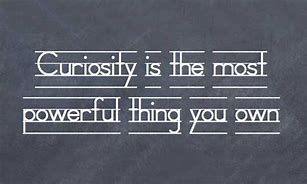
Footnote to engineers
As you may have surmised, this contribution to humanity was engineered by professional engineers in good standing, compliant with the conditions of our licenses. In fact it was our compulsion to live up to the standards of our chosen profession that made it necessary to engage the social sciences. The reason is simple. There was no way to excel in the yardsticks of professional performance without harnessing sociotechnical knowledge. Nothing else in the engineer’s armamentarium works so fast to such huge effect. To not use this sociotechnical knowledge in the practice of engineering is immoral and self-defeating.
We learned that hurdles, such as safety and quality, could be cleared in no other way than by removing the social system dysfunctions blocking progress. When the social system roadblocks to performance were lifted, the quantum improvements were instant and dramatic. We learned that it was impossible to clear with technology the barriers imposed by organizational psychosis. You had to deal with the psychological dysfunctions first, be psychotherapists. Yes, you didn’t sign up for this field when you went to engineering college.
The lesson for the engineer’s mindset is clear. If you really want to perform at your best, attain your goals with prudence, be professional, there is no alternative to merging your mental models of reality and natural law with knowledge from the social and psychological sciences. Choosing to stay within the channel set by your engineering specialty is choosing to perform below your capability. Prudence has no middle ground.
You may be surprised to learn just how easy and quick it is to demonstrate this phenomena of block improvement in performance right in your own shop. In less than an hour, you could be demonstrating the phenomena yourself. How you respond to the offer to witness the magic answers any and all questions.
Prudent Choice Making, generic checklist
- Action demand signal registers.
- Pause taking action and follow checklist
- Prequalification
- Credible source of demand?
- Examine the stated goal of the choice demand
- Navigational aid worthy?
- Credible? Possible?
- Classify choice
- Material, conscious mind
- Operations
- Project (novel, temporary)
- Voluntary collaboration
- Opinion, subconscious mind
- Intuition
- Debates, aggression
- No personal qualifications to engage
- Material, conscious mind
- Material
- Evaluate significance of goal and process
- Size, value
- Complexity, multiplicity, connectance
- Consequences exposure
- Benefits opportunity
- Urgency
- Scope
- Issue deemed not vital but actionable
- Revisit source credibility
- Determine goal of chosen efforts
- Provide for SCRBF cycle
- Use intuition
- Commence SCRBF implementation
- No personal qualification to engage
- Significant Issue – Avatar Proving Ground Design
- Qualifications to engage
- Goal specification, GPS, success criteria, what “done” looks like
- Franceschi Fitting status (FF), from concept to part numbers
- Ashby’s Law of Requisite Variety status (ARV)
- Design Basis Events (DBE)
- Configuration and parameterization
- Study precedents
- Documentation
- Examine implementations
- AQI actionable quality information determination for Avatar Proving Ground
- Goal setting
- GIGO
- Foreseeable threats beyond DBEs
- Tort standard
- Risk Assessment
- Risk analysis
- Pre-establish acceptance criteria
- Baseline performance reference benchmark
- Risk analysis
- Natural Law conflicts
- Pre-established selection criteria LCRBF cycle (study, judgment, opinion)
- Performance
- Safety
- Quality
- Availability
- Reliability
- Efficiency
- Goals for dynamic simulation, ecosystem design modules
- Significant variables, configurations
- Stability limits
- Dynamics of disturbances
- Social system context, launchpad status
- Plan A, corruption, distrust
- Plan B, collaboration, high-stakes trust
- Alignment with human nature
- Alignment with relevant natural laws
- Social status value system in service (A\P)
- IA avatar dynamic simulation (DBEs)
- Run configurations and events on proving ground
- Independent and dependent variables
- Covariance
- Select by measured criteria vs benchmarks, no judgment, opinions
- Context stop rules
- Implement selected LCRBF process
- Second Law entropy extraction
- Evaluate significance of goal and process
The items on this checklist are covered throughout the website. The checklist should be used as a checklist, as a safeguard. It should be familiar but it doesn’t have to be memorized. Its purpose is to preempt making really bad choices, the kind featured in every history book.
To handle the small stuff, set up your SCRBF cycle and use intuition. Done. To handle the big stuff, only conscious-mind processing will do. And, you can’t skip a section. The enormous contrast is just the way it is, you don’t have to like the struggle, but it does go a long way to explain why civilizations fail.
The motto of our corps of discovery, as mentioned earlier is: you have to do something else first and prudence is no exception. Don’t bother with prudence without high-stakes trust established and forget about trust building if you don’t GYAT first. The requirement is simply that GYAT is measured by the subconscious mind in a centisecond as a prerequisite for putting trust on the choosing agenda.
The very same task-action checklist applicable to GYAT applies to trust building applies to prudence. The kicker is that prudence is a Sisyphus.

Visits: 172

